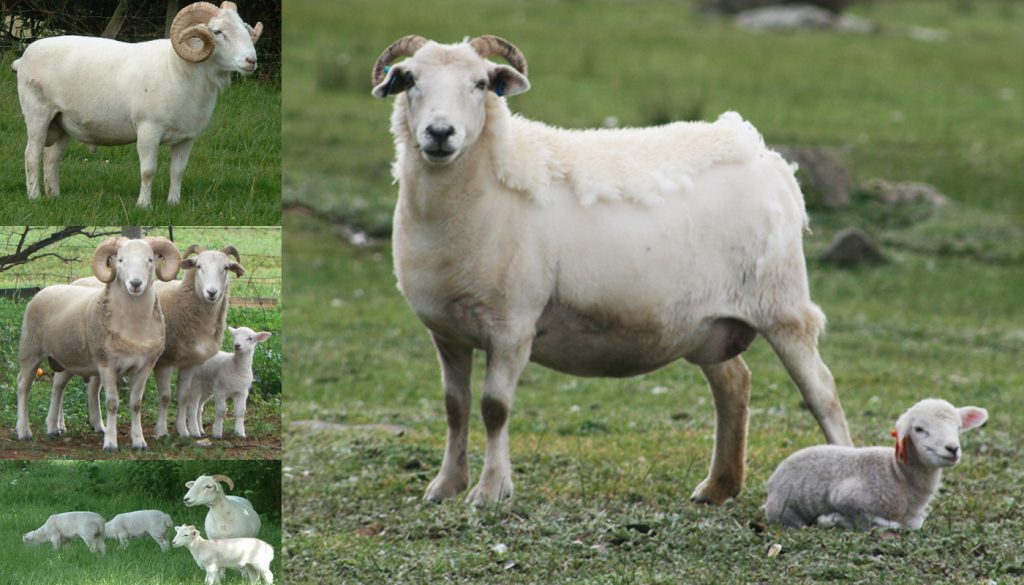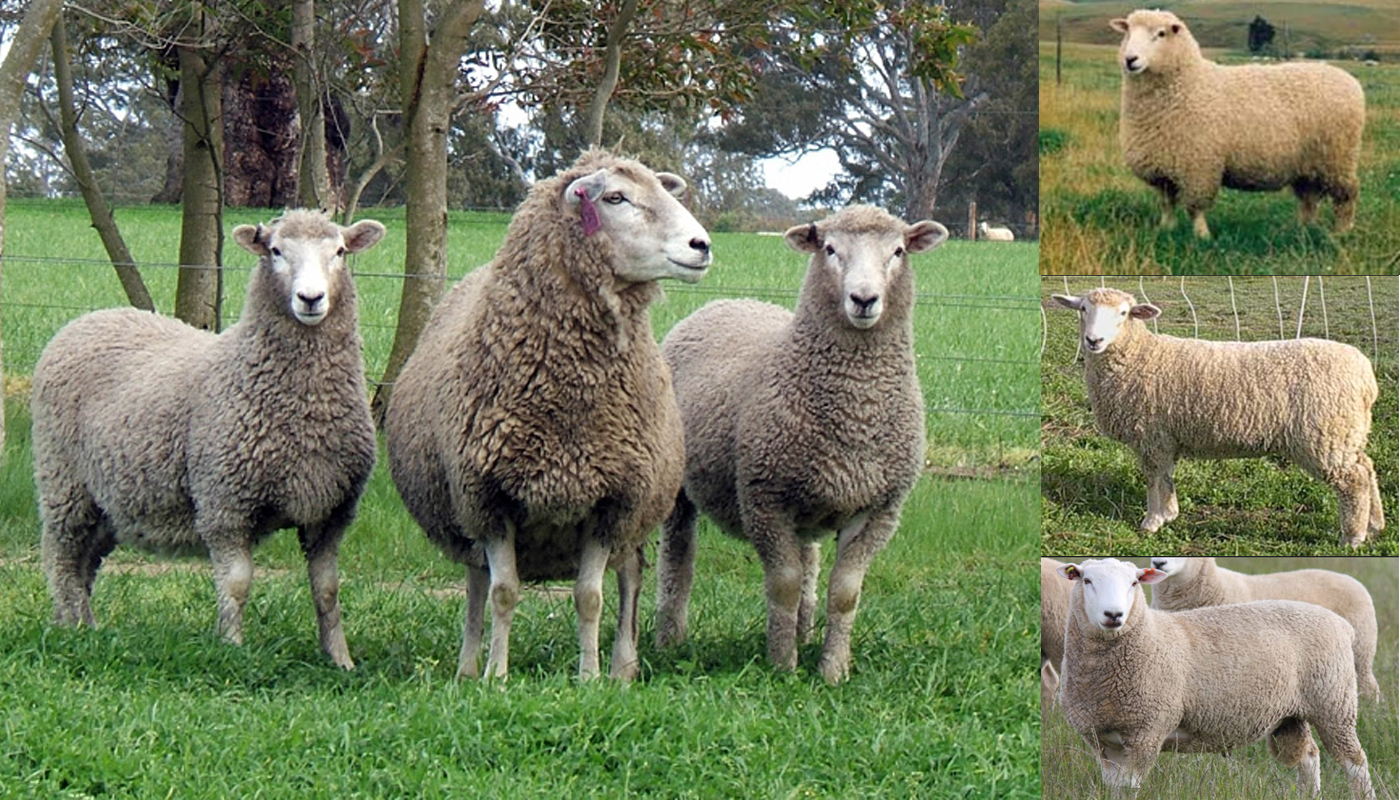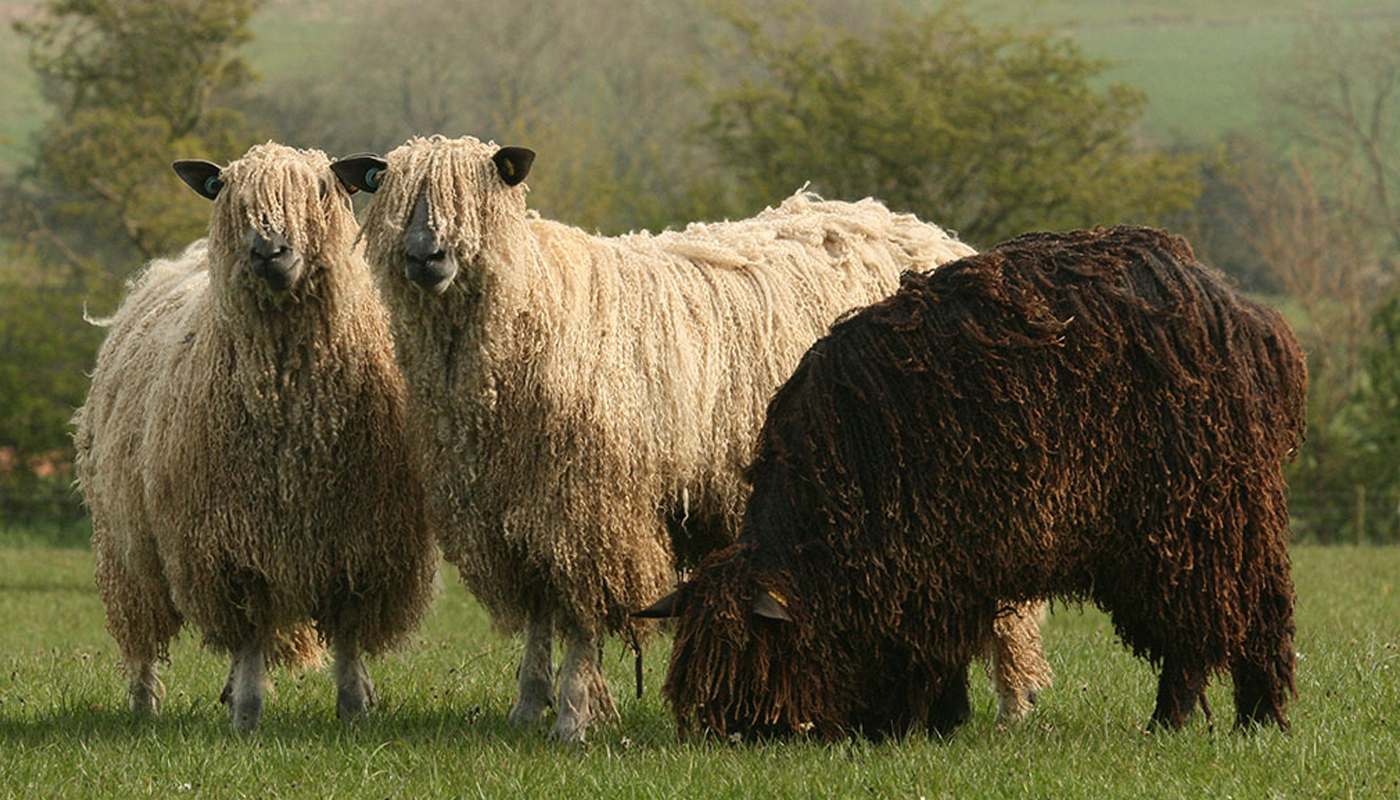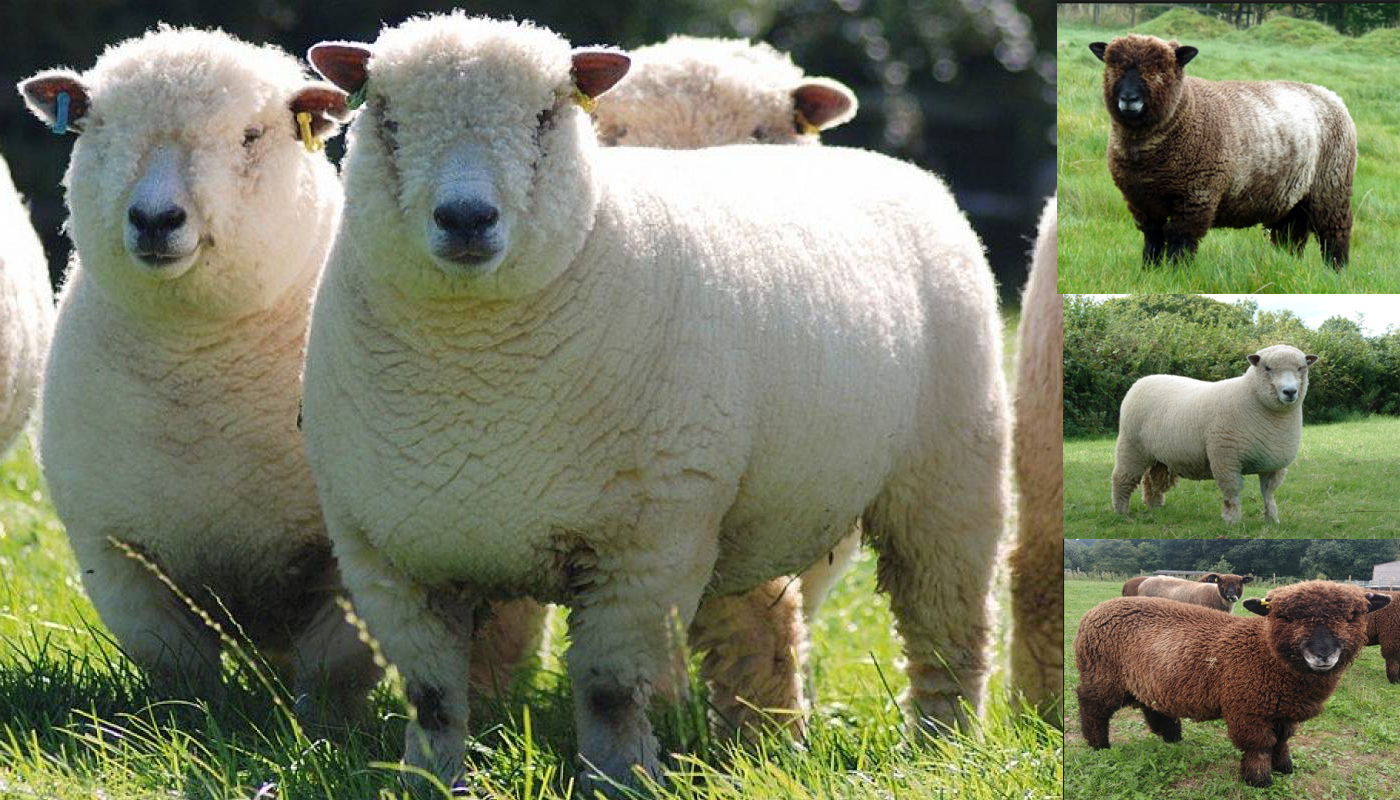
The Wiltshire Horn sheep is rather a unique breed of sheep in that it does not need to be sheered as it naturally sheds its short wool and hair coat in the spring.
It is a large breed of sheep that originates from Wiltshire in the South of England and is mainly bred for its outstanding meat quality.
WILTSHIRE HORN SHEEP QUICK PROFILE OVERVIEW |
|
|---|---|
| The Wiltshire sheep breed does not need to be sheered as its molts is short fleece and hair coat each spring. They are known as horned hair sheep and are quite rare in the United States. | |
| Country of Origin: | United Kingdom |
| Other Names: | None |
| Breed Size: | Large |
| Main Purpose: | Meat |
| Can be used for | Breed, **LSC, Meat, Wool |
| Temperament: | Docile and can be a bit wary |
| Ideal Climate: | Heat, Cold, Most climates |
| Conservation Status: |
Yes listed by the *ALC Status/Rarity: Watch |
| Health Issues? | No known health issues |
| Good Starter Sheep? | They are more for the intermediate and up level of sheep farmer/keeper |
| Sheep Associations: | Wiltshire Horn Sheep Society |
| Sheep Clubs: | Please refer to the Wiltshire Horn Sheep Society members/breeders directory listings |
| Note: *ALC stands for American Livestock Conservancy ** LSC stands for Landscape Management – the animal is used for controlling various vegetation growth |
|
PHYSICAL CHARACTERISTICS |
||||||||||||||||||||||||||||||||
|---|---|---|---|---|---|---|---|---|---|---|---|---|---|---|---|---|---|---|---|---|---|---|---|---|---|---|---|---|---|---|---|---|
| The Wiltshire Horn sheep breed a large breed of sheep with long legs and body. They have cropped short tails, clean smooth faces and legs with a fine white hair covering. | ||||||||||||||||||||||||||||||||
| Color(s): | White or light brown | |||||||||||||||||||||||||||||||
|
||||||||||||||||||||||||||||||||
EWE BREEDING & MILKING INFORMATION |
|
|---|---|
| The ewes breed once a year and mostly produce enough milk to wean their lambs. | |
| Breeding Period/cycle: | Usually lasts 24 to 36 hours |
| Estrous cycle: | Ave. 17 days/13 to 19 days |
| Gestation Period: | Usually, around 150 to 155 days but most gestation is 152 days |
| No. Lambs/Litter: | 1 and on the rare occasion 2 (twins) |
| Lactation Period: | Usually, around 150 to 240 day but most are milked for 180 days |
| Milking From: | 4 to 6 weeks after lambing |
| Milk Quality: | Good |
| Milk Ideal for: | Lambs |
| You may Also Like: | 10 Best Sheep Breeds for Milk |
SHEEP MEAT PRODUCTION INFORMATION |
|||||||
|---|---|---|---|---|---|---|---|
| They are known for the high-quality meat production. Lambs can grow to their required weight without putting on any excess fat and therefor eliminating wastage. They produce a full-flavored succulent meat. | |||||||
| Meat Production: | Yes, Quality: Premium grade meat | ||||||
|
You may Also Like: | 11 Best Sheep Breeds for Meat Production | |||||
GOOD TO KNOW |
|
|---|---|
| A few more interesting facts to know about the breed | |
| Child-Friendly? | No livestock should be left unattended around an unsupervised child |
| Landscape Management? | They are excellent at finishing off grass. |
| Where to buy them? | Please refer to the Wiltshire Horn Sheep Society members/breeders directory listings |
| General Information: | The Wiltshire Horn sheep breed grows a thick kemp wool coat during the Autumn to Winter months which it will shed in the spring. There is no need for sheering which helps cut costs for the smaller farmer as there is not need for sheering expenses. The breed is ideally suited to both indoor and outdoor lambing systems. The lambs are born with a lot of vigor and a thick coat to protect them from the elements. The Wiltshire horn breed of sheep makes for an excellent crossing breed and the rams make superior meat sires to produce lambs that finish quickly and are lively at birth. |
HISTORY
The Wiltshire Horn sheep breed is a very old breed that is native to Wiltshire and could be found roaming the Wiltshire Downs up until around the 18th century.
During the 19th century the breed fell out of favor as the economy turned more to the production of wool.
In 1923 the Wiltshire Horn breed of sheep was saved from extinction by the Wiltshire Horn Sheep Society and in the 1970’s the breed became a protected breed by the Rare Breed Survival Trust. Since then the breeds numbers have significantly increased into a large commercial flock that it is today.
It population growth is thanks to its unique ability of being able to shed its wool in the spring. This significantly cuts down on time and labor costs that usually cut deeply into most sheep farmers budgets. It is now very popular with the smaller sheep farmers due to is low/easy care advantages.
The strength and durability of this breed make it the perfect choice for the sheep farmer of the 21st century especially those that do not have the larger budgets or the commercial farmers. The Wiltshire horn breed meets all the stringent requirements of the modern sheep industry.
Video
USEFUL LINKS
- United States Lamb Resource Center
- American Sheep Industry Association
- American Sheep Industry Association List of Breed Associations & Standards
- American Milk Sheep Association
- Dairy Sheep Association of North America
- American Wool Council
- Fur Commission USA
- North American Meat Institute
- American Lamb Board
- National Lamb Feeders Association
- American Livestock Conservancy
- Animal Shelter (ASPCA)
- American Veterinary Medical Association
- American Animal Welfare Society
- American Animal Control
- American Animal Husbandry Society
- United States Department of Agriculture
 Coopworth Sheep Breed – Everything You Need to Know
Coopworth Sheep Breed – Everything You Need to Know Wensleydale Sheep Breed – Everything You Need to Know
Wensleydale Sheep Breed – Everything You Need to Know Targhee Sheep Breed – Everything You Need to Know
Targhee Sheep Breed – Everything You Need to Know Ryeland Sheep Breed – Everything You Need to Know
Ryeland Sheep Breed – Everything You Need to Know American Tunis Sheep Breed – Everything You Need to Know
American Tunis Sheep Breed – Everything You Need to Know Herdwick Sheep Breed – Everything You Need to Know
Herdwick Sheep Breed – Everything You Need to Know 18 Best Wool Producing Sheep Breeds
18 Best Wool Producing Sheep Breeds Merino Sheep Breed – Everything You Need to Know
Merino Sheep Breed – Everything You Need to Know Polypay Sheep Breed – Everything You Need to Know
Polypay Sheep Breed – Everything You Need to Know Romney Sheep Breed – Everything You Need to Know
Romney Sheep Breed – Everything You Need to Know Hampshire Sheep Breed – Everything You Need to Know
Hampshire Sheep Breed – Everything You Need to Know Cheviot Sheep Breed – Everything You Need to Know
Cheviot Sheep Breed – Everything You Need to Know